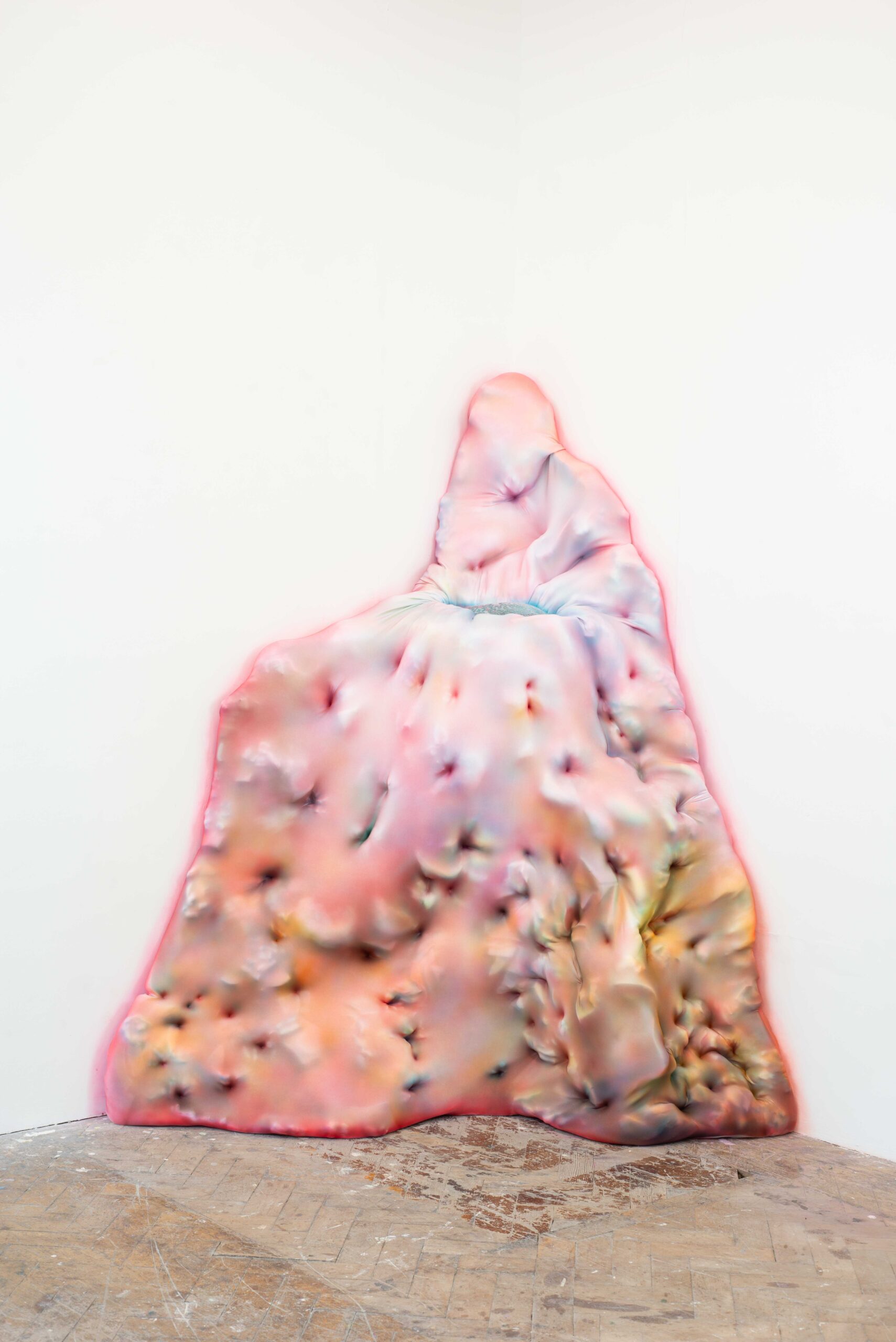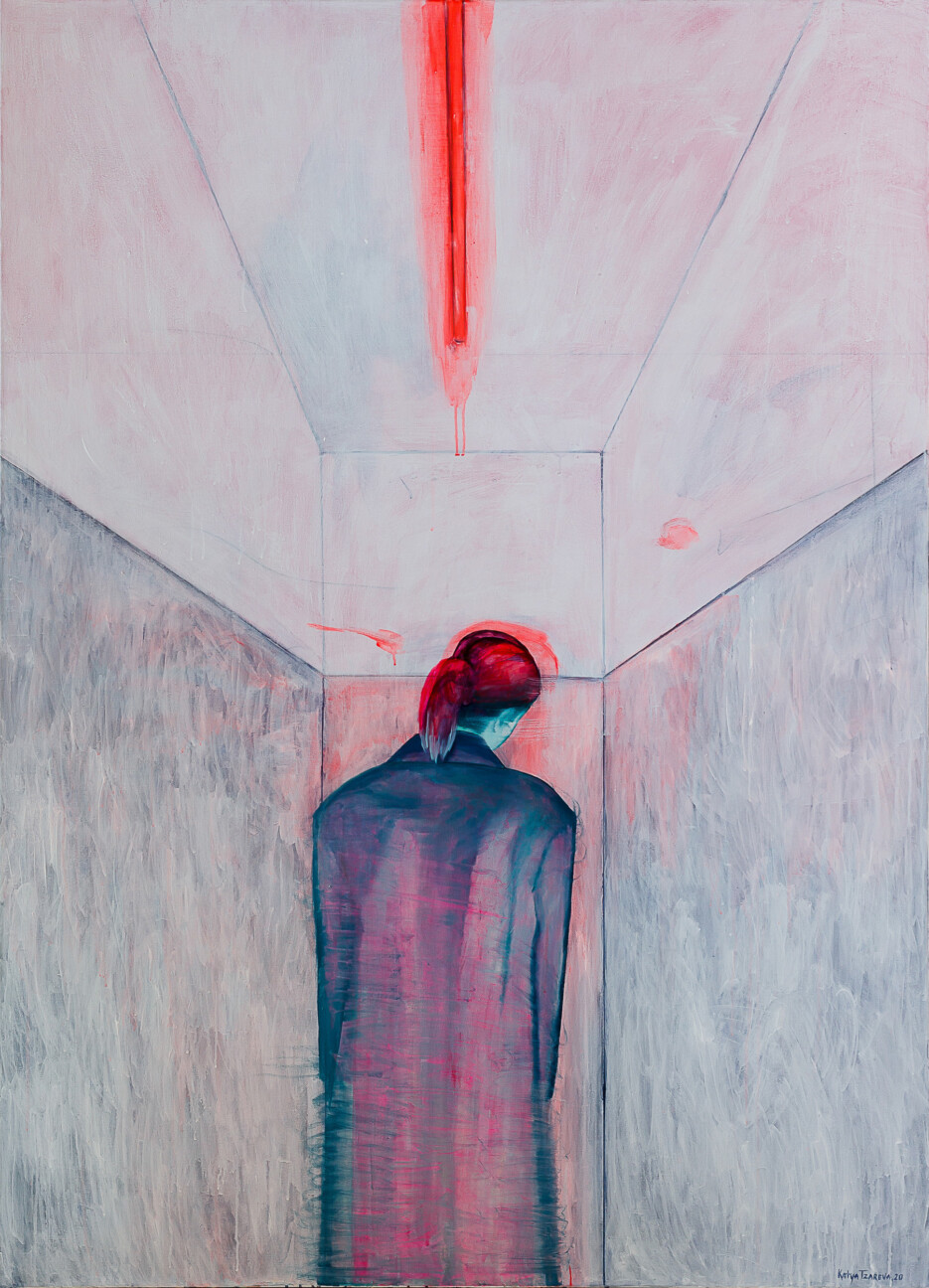Artists Katya Tsareva and Damaris Athene have different backgrounds, but they share an interest in exploring the theme of corporeality through their artistic practice.
What can and should the body be?
| Author | |
|---|---|
| Category | Columnists, Culture, Lifestyle, People, Town |
| Date | March 26 2024 |
| Reading Time | 6 min. |
What can and should the body be?
Katya Tsareva’s work is familiar to the Russian art scene. Her first solo exhibition took place in 2012. In 2016, the artist participated in a residency program with the GridchinhallGallery & Art-Residence, and also took part in the Moscow International Biennale of Young Art. Katya was recognized as one of the top 100 young Russian artists (2017), compiled by the analytical agency InArt. In 2018, she had a solo exhibition at the Udmurt Republic Art Museum, Russia. In 2022 she participated in a collective exhibition supported by Voices of Culture at the Art Centre Basel, Switzerland. Katya has currently moved to London where she continues to work on a new series of paintings.
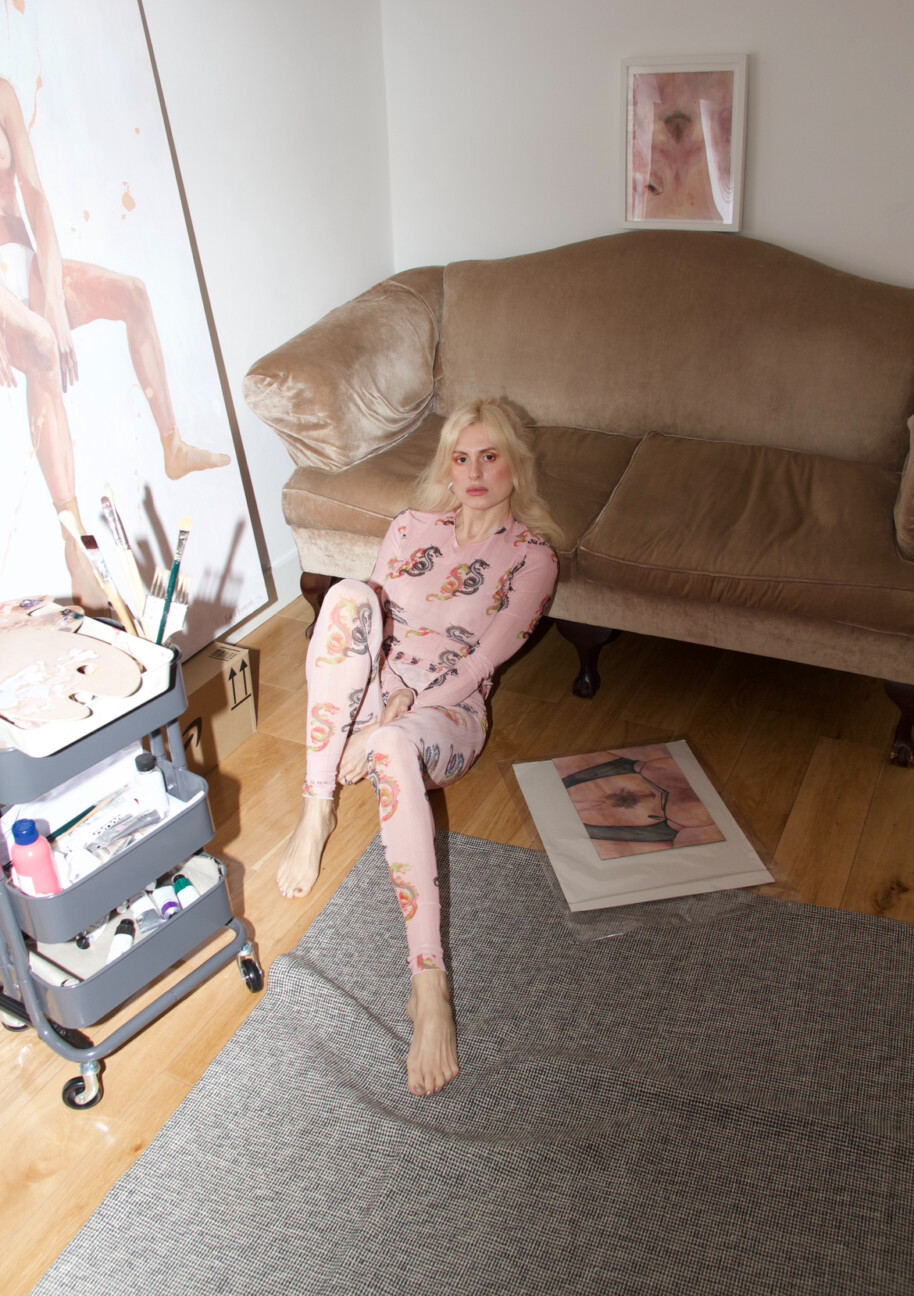
Damaris Athene, originally from Bristol, won the hearts of the local community a few years ago. In 2017 her first solo took place in Cambridge. Damaris is currently studying at MA Ceramics & Glass at the Royal College of Art, specialising in glass and will graduate in August this year. Her public show will be from 20th-23rd June 2024. Damaris has also got some upcoming group shows in London: ‘Unveiling Abstractions’ (23 February to 30 March 2024) at Hypha HQ in Euston curated by Zoë Goetzmann and Mellissa Vipritskaya Topalhas and ‘In Loving Memory’ (26 April to 22 May 2024) at Guts Project Space curated by Charlotte Leseberg Smith. The artist will betaking part in the inaugural exhibition at SLQS Gallery, a brand new contemporary art gallery that champions women artists.
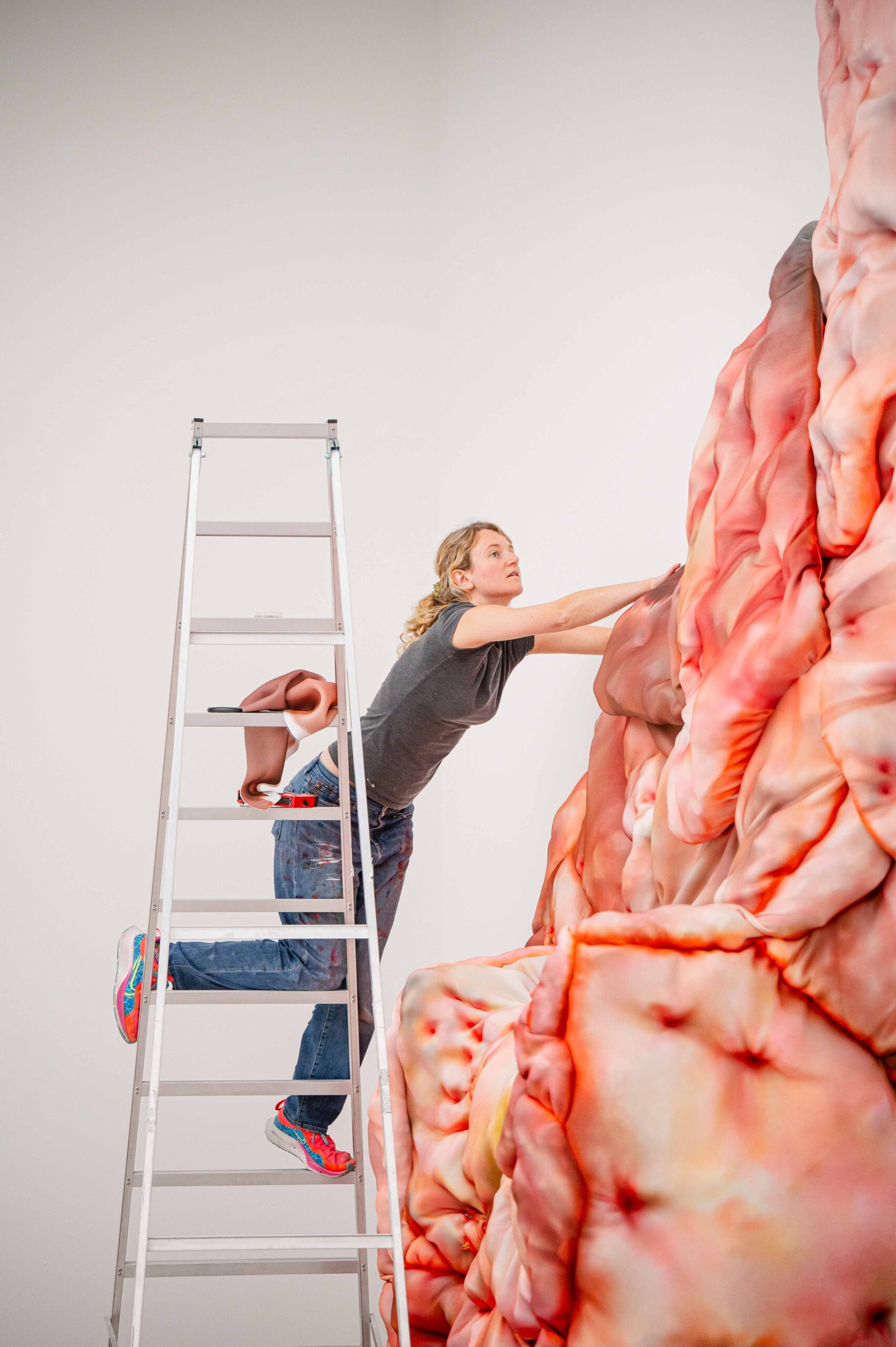
How did you come to explore the theme of corporeality andhow do you reconcile the attractive and the repulsive in your work?
Katya Tsareva: Throughout my practice, there have been two themes that I have developed in my work in one way or another. I have always worked with the themes of exploring space and identity, representing one through the other and vice versa. That is to say, there has always been a human being in my work, even in those where I have left only space. I have always been based on the idea that any space created by a person can tell a lot of things, signifying who made it and for whom. Now I am more interested in delving into my painting practice and working with the human body and its imagery. While working on this new series, I realised that there is a certain barrier or line where the attraction of corporeality turns into something repulsive and for some people even disgusting. That barrier is different for everyone. So I can’t say that my work is a combination of both, I am looking for interesting interpretations of corporeality, and sometimes I manage to cross someone’s line.
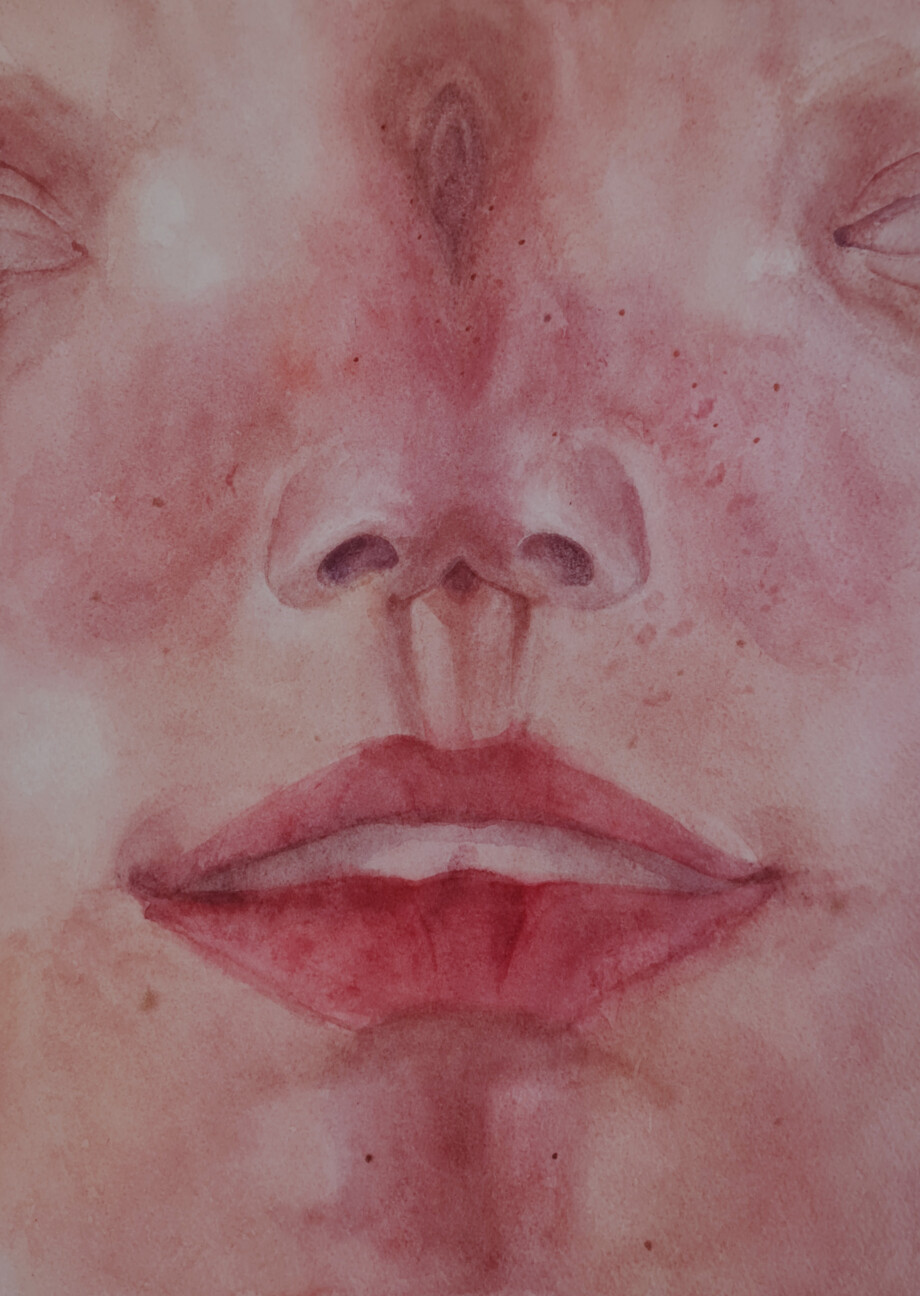

Damaris Athene: I’ve always been interested in the body, even wanting to study medicine when I was younger. I’m fascinated by the unseen worlds we contain within us, ones that are inaccessible without surgery or scans and that we rarely think of until we experience illness or injury. In the last 4 years or so I’ve become more concerned with how digital technology alters our perception of the materiality of our bodies. Perfected images on flat digital displays are a far cry from the physical reality of living in a body and this dissonance is inescapable in modern daily life. In my work, I want to explore the push and pull of attraction and repulsion, inhabiting a border space between two supposedly opposite conditions. I seek to create work that is non-binary, where multiple possibilities can be held, rather than a reconciliation where things agree with one another and have become homogenised.
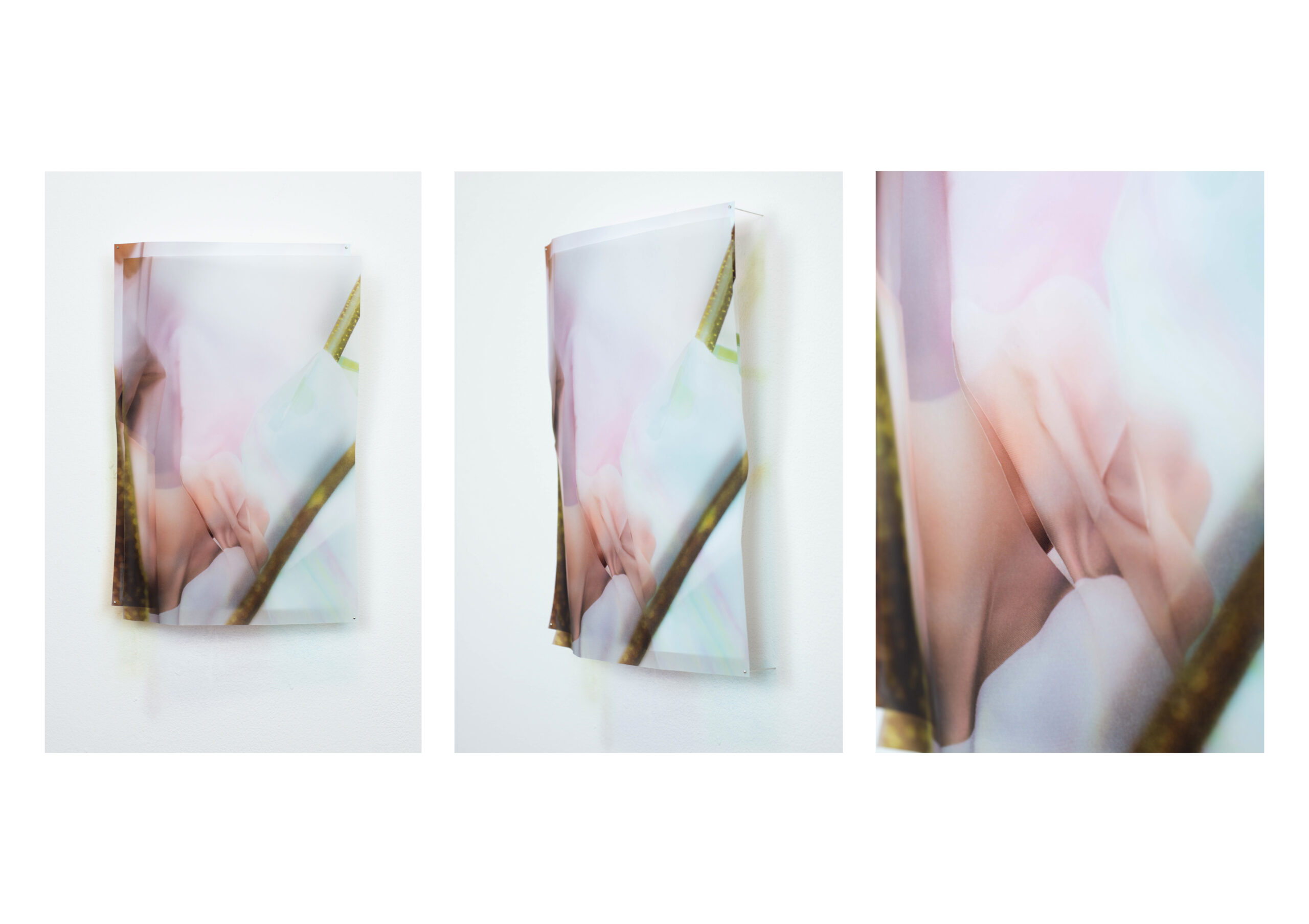
What base do you use to create your work – is it a photographic image or a digital collage? What is the rationale behind this choice?
Damaris Athene: My work never stems from one image, as many different sources of research feed into one piece. I work between 2D and 3D, often folding work back in on itself and kneading it into new forms, building on what has happened before. When planning a new piece, I choose the medium that best fits conceptually and aesthetically.
My work is created through experimentation and exploration, and although I may have something in mind when I start working on a piece, things develop and change during the making process. I started working with glass last year. I’m fascinated by its material properties, how it’s an amorphous solid (molecularly appearing to be in a liquid state when it is in fact solid), hard yet flexible in small quantities, transparent yet impermeable, fragile yet strong. I can’t completely control what it does, which is captivating!
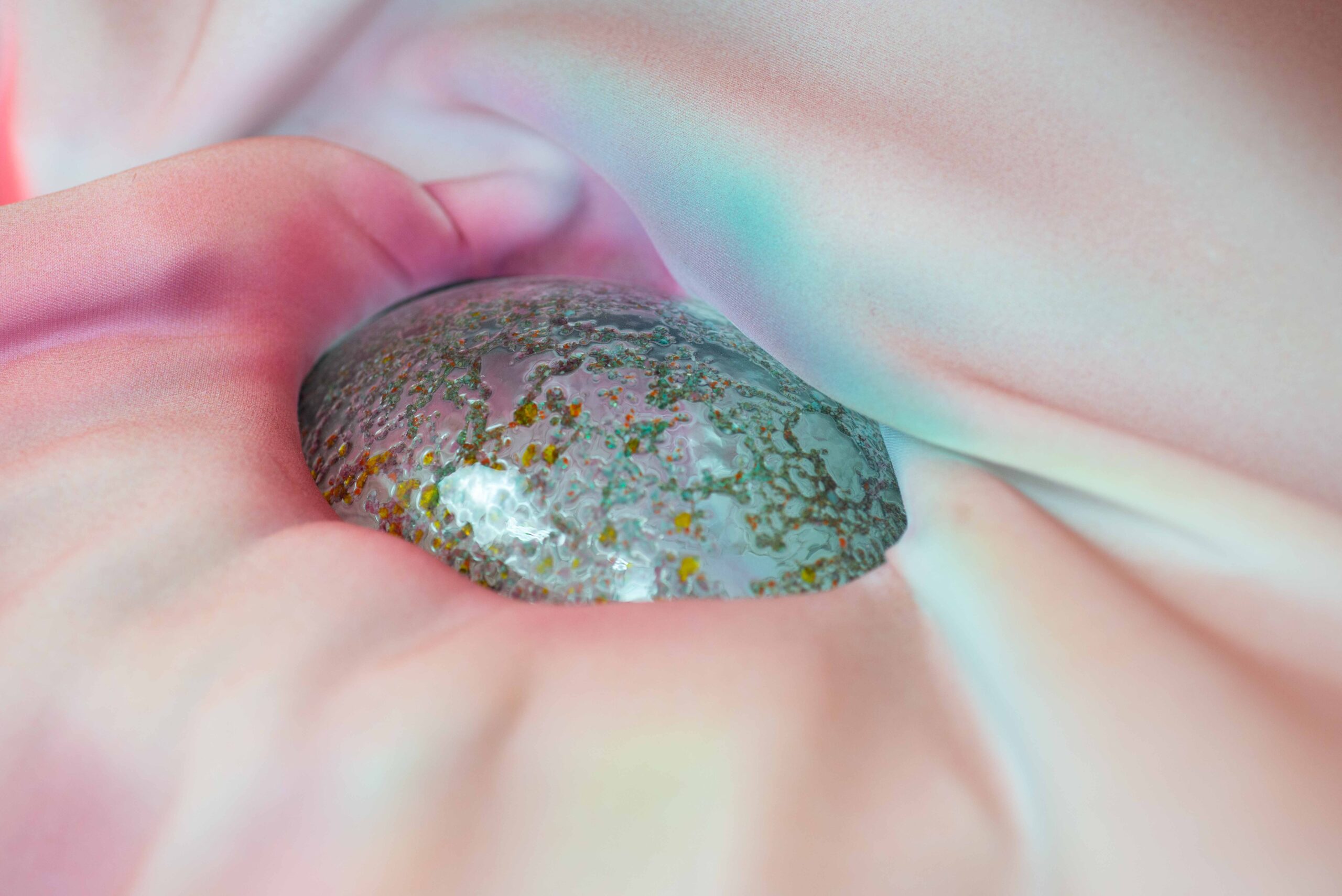
Katya Tsareva: For my work, I look for photographs or take my own photographs for revision, it all depends on the tasks and my capabilities. For example, if I can’t find a model for myself with a certain appearance, I will look for pictures in the public space of the Internet, but I, of course, prefer to rely on my own pictures, since the found image is already limited in one way or another. Often, especially for past series, I myself acted as models for my works, and even more often I asked people from my close circle or acquaintances to pose for photographs. For my new series, I change portraits, figures, fragments using collage and computer graphics, achieving a new form. The resulting images become my nature, and then I work with the painting, inflating myself into it.
Your previous projects quite often interact with space. Share the most interesting realised project that you are proud of. What advantages and challenges have you encountered when working with three-dimensional space?
Katya Tsareva: I really love working with space, so almost all of my solo exhibitions either include or are total installations. From past projects, I am very proud of the exhibition “My Rooms” at the Futuro Gallery in Nizhny Novgorod. I was very lucky to have the opportunity to work with this simultaneously very complex and incredibly beautiful space. In this kind of work there are always complex issues of realisation of an idea, sometimes completely unsolvable, but this way of artistic expression seems to me the most complete, able to present the idea from different sides. It is as if to immerse the viewer inside your art, to offer to become a part of it.
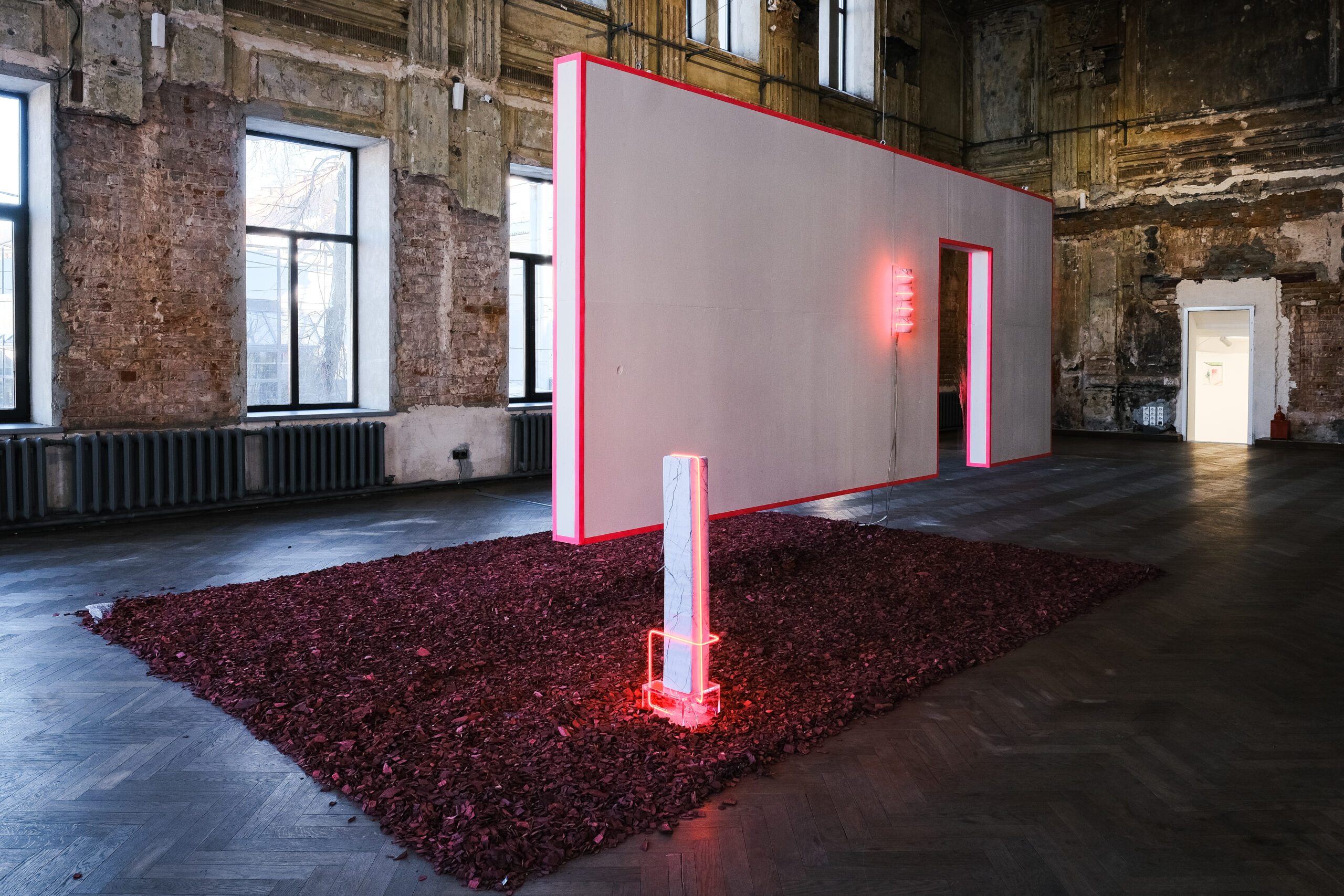
Damaris Athene: I’m proudest of my site-specific installation, ‘Fruiting_Body.004.2’, exhibited at the Saatchi Gallery in London for the UK New Artist of the Year Award in November 2023. It’s my largest piece to date. It was a further development of the site-specific installation made for my degree show at City & Guilds of London Art School in September 2023. I had to make ‘Fruiting_Body.004.2’ in my studio in sections that could fit through my studio door and be combined once they were at the Saatchi Gallery.
Making sculpture is often more expensive than working with other mediums, and storage of work becomes a nightmare! But I’m most drawn to sculptural work as its existence in three-dimensional space gives me a more visceral and bodily viewing experience, the antithesis to our ever flattened digitised lives.

In London there are quite a lot of collaborations with curators and independent venues. In this format the artist feels most free. How close is this format for you or do you prefer to work with one gallery on a permanent basis?
Damaris Athene: I’ve really enjoyed working with different galleries as they each have a distinct context, their physical space and audiences can differ vastly. This means my work can be seen by a wider range of people. I haven’t experienced working with one gallery on a permanent basis. I suppose it would provide security but if they’re not a gallery that has your best interests at heart it could be a damaging experience. I’ve heard some horror stories from other artists. The traditional model of having gallery representation is now evolving to something more fluid.
Katya Tsareva: I have no experience with a single gallery yet. All my practice up to this point has been quite free. I decided on my own which projects I wanted to participate in and which I didn’t, and which proposals I wanted to respond to. In this format you feel more free, but on the other hand, I realise that when there is a gallery that fully supervises an artist, it is a more comfortable way of dealing with many aspects related to various negotiations, promotion opportunities, participation in various projects, paperwork, and an additional incentive to work too. As there is always someone other than you who cares about your work. But this is all on the condition that you are lucky enough to have a gallery.
